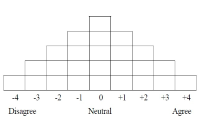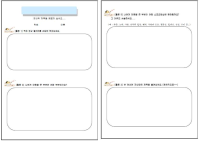PURPOSE This study analyzed the relationship among coaching behaviors, motivational climate, sports competence, effort, and failure tolerance as perceived by high school athletes. Additionally, it examined whether motivational climate, competence, and effort mediate the relationship between coaching behaviors and failure tolerance. METHODS Using questionnaires measuring autonomy-supportive coaching behavior, controlling coaching behavior, motivational climate, sports competence, effort, and failure tolerance, 365 high school athletes were surveyed. Using SPSS 28.0 and Amos 28.0 software, descriptive statistics and structural equation modeling were conducted along with the following types of analyses: reliability, correlation, confirmatory factor, convergent validity, and discriminant. Additionally, the bootstrap method was used to verify serial multiple mediating effects. RESULTS Autonomy-supportive behavior had a significant positive effect 1) on motivational climate, sports competence, and effort and 2) on failure tolerance. 3) Controlling coaching behavior had a significant negative effect on motivational climate and sports competence. 4) Motivational climate and 5) sports competence both had a significant positive effect on effort. 6) Effort had a significant positive effect on failure tolerance. Last, in the relationship between autonomy-supportive behavior and failure tolerance, motivational climate, sports competence, and effort showed partial mediating effects. CONCLUSIONS This study confirms the importance of coaches’ autonomy-supportive behavior in determining failure tolerance among adolescent athletes. Based on this information, counseling (educational) programs aimed at enhancing performance can be developed and provided in sports settings, thus fostering success among athletes.
Purpose The aim of this study was to examine how middles school students in physical education class perceived relations between parental and teacher’s autonomy support, enjoyment, self-efficacy, academic effort, and P · E class flow. This study also investigate the mediating effects of enjoyment, self-efficacy, and academic effort on the relations between parental autonomy support and P · E class flow and between teacher’s autonomy support and P · E class flow. Methods For this study, 323 middle school students completed surveys to measure their perceptions of parental and teacher’s autonomy support, enjoyment, self-efficacy, academic effort, and P · E class flow. SPSS 24.0 was used to calculate descriptive statistics, reliability, and correlations. Amos 22.0 was utilized for confirmatory factor analysis, convergent validity, discriminant validity, and structural equation modeling. Additionally, 2000 bootstrap samples were requested for the mediation effect analysis. Results First, parental autonomy support was positively predictive of enjoyment and self-efficacy. Second, teacher’s autonomy support positively influenced enjoyment and self-efficacy. Third, enjoyment and self-efficacy positively affected academic effort. Forth, academic effort was positively related to P · E class flow. Fifth, there were partial mediating effects of enjoyment, self-efficacy, and academic effort on the relationship between parental autonomy support and P · E class flow. Lastly, there were partial mediating effects of enjoyment, self-efficacy, and academic effort on the relationship between teacher’s autonomy support and P · E class flow. Conclusions The study found that teachers' autonomy support was stronger predictive of student’s P · E class flow in physical education class than parent's autonomy support was. The finding is meaningful in that it is worth providing and utilizing practical knowledge from an educational perspective.

Purpose This study was to explore construct of fear and courage behavior overcoming the fear and relationship between fear and courage in competition. Methods Total 65 national athletes of combat sports(Judo, Boxing, Taekwondo, Fencing) responded to open questionnaire about fear and courage behavior in competition. The data was analyzed by triangle verification and content analysis. Results Firstly, the fear of combat sports athletes consisted of five factors, which were negative consequences, lack of preparation for a game, concerns of performing one’s best, expectation of significant others, and internalized ego threat. Secondly, courage behaviors to overcome fear were self-effort, self-suggestion, self-conviction, selfish self-regulation, social self-control, self-analysis, and acceptance of experience. Finally, there were the relationship between fear and courage in competition. Conclusion These results will contribute to provide useful information for combat sport athletes and coaches in different level to cope with competition fear.

PURPOSE This study aimed to explore the structural relationships between technology-related factors and the intention to use baseball data, drawing upon the Unified Theory of Acceptance and Use of Technology (UTAUT) and technology readiness (TR). METHODS Survey data from 203 Korean professional baseball players were used in frequency, reliability, correlation, and confirmatory factor analyses as well as structural equation modeling. RESULTS Positive TR positively influenced performance expectancy, effort expectancy, social influence, and conditions facilitating baseball data use. Negative TR did not significantly impact performance expectancy, effort expectancy, social influence, and conditions facilitating baseball data use. Performance expectancy, effort expectancy, and facilitating conditions were found to positively influence data use intention, while social influence did not significantly impact data use intention. CONCLUSIONS The findings suggest that increasing performance expectancy, effort expectancy, and facilitating condition factors could be key to enhancing the intention to utilize baseball data.
Korea Sports Association for the Disabled have a responsibility for sports promotion of the disabled. After the launch of the organization 10 years have passed and now there ara a lot of achievement and challenges. By applying the system theory there ware derived many performance and ahallenge. First, in terms of system boundaries the organization requires an understanding of several related businesses within government departments and sports organizations to promote cooperation between business needs to enhance the professionalism. Second, in terms of the production system the organization requires specialization of the purpose, division of labor according to the principles of the process of professionalization, specialization according to the needs of beneficiaries, according to demographic characteristics. Third, in terms of keeping system the degree of formalization of business rules and procedures to enhance the selection, training, compensation of employees is necessary to improve the system and gather the information you need to perform tasks. Forth, in terms of adaptive systems research budget in view of the research need to be carried out as planned and secured by business efficiency and effectiveness, and to ensure accountability through evaluation utilizing external experts in departmental organizational diagnosis and assessment. Fifth, in terms of organization and management system there are necessary to affiliate effort to resolve the conflict between the hierarchical and reward trade-offs and goal setting and the use of resources allocation, substantiality of performance evaluation. Sixth, Five kinds of systems that require priority sector innovation efforts in the production system, management system, adaptive systems, maintenance systems, boundary systems in order.

Purpose The purpose of this study is to conduct a typological classification of female recreational sport participants' coaching experience. Methods Q methodology was conducted using 25 Q-samples and 25 P-samples. Data were analyzed using PQmethod software. Results Four types were categorized: communication and character-oriented (I), function and immersion-oriented (II), process and fun-oriented (III), and function and inclusion-oriented (IV). These types were re-categorized as 'non-functional value-oriented (I, III)' and 'functional value-oriented (II, IV)'. Conclusion This study also made efforts to explore the value and norm that female participants expect from sport participation, which provided a variety of perspectives on social, psychological and philosophical discussions about woman sport. In addition, each type and its characteristics can be used as meaningful basic data in teaching method (coaching theory) for woman sport.


Purpose The purpose of this study was to empirically analyze the relationship between a commercial sports centers employees’ empathy, job satisfaction, customer orientation, service quality & organization loyalty through structural equation model analysis. Methods For this purpose, this study set 205 employees’ at the eleven commercial sports centers located in Seoul as the research subjects. In an effort to verify the proposed structural model, this study used IBM SPSSWIN Ver. 21.0 and AMOS 18.0. Results First, cognitive empathy had a positive effect on job satisfaction. Second, emotional empathy had a positive effect on job satisfaction. Third, communication empathy had a positive effect on job satisfaction. Fourth, job satisfaction had a positive effect on customer orientation. Fifth, job satisfaction had a positive effect on service quality. Sixth, job satisfaction had a positive effect on organization loyalty. Seventh, customer orientation didn’t had a positive effect on organization loyalty. eighth, service quality had a positive effect on organization loyalty.


[Purpose] The purpose of this research is to empirically analyze the relationship between self-determination and relationship commitment, customer orientation, service quality, and relation continuity intention of fitness center customers through structural equation model analysis. [Methods] For this purpose, this study set 242 members at the five fitness centers located in Seoul as the research subjects. In an effort to verify the proposed structural model, this study used IBM SPSSWIN Ver. 21.0 and AMOS 18.0. [Results] As a result, first, autonomy had a positive effect on relationship commitment. Second, competence didn’t had a positive effect on relationship commitment. Third, relatedness had a positive effect on relationship commitment. Fourth, relationship commitment had a positive effect on customer orientation. Fifth, relationship commitment had a positive effect on service quality. Sixth, customer orientation had a positive effect on relation continuity intention. Seventh, service quality had a positive effect on relation continuity intention


Researchers and teachers in physical education have emphasized sportsmenship in sport education setting. However, how to teach sportsmenship in physical education is not proposed yet. The purpose of this study was (1) to develop an instructional program for teaching and learning sportsmanship and (2) to examine its effects on sportsmenship. Participants were 7th middle school students(N=95). Data were collected using Sportsmanship Test(Park, 2014), open-ended questionnaire and in-depth interviews with students. The data were analyzed through paired samples t-test and qualitative content analysis. Results showed that significant difference was observed in students' sportsmanship test scores after instruction. Analysis of interview data showed that students experience the value of utmost effort, respect for opponents, respect for teammates, acknowledging results, respect for judgment, and valuable lessons related to character education. Implications for sportsmanship education using instructional program were discussed.



This study aims to find the alternative to increase the participation rates of physical activities and to analyze socio-demographic factors that determine sporting participation in Korea. We estimates the sporting participation model with ʼ2012 national sport participation survey in Korea' and binary logit analysis. The results are as follows: sporting participation is positively related to gender(male), age, education level, household income, health status, leisure time in weekday, proximity to public and private sports facilities. The most significant factors influencing the raising the participation rates of physical activities factors are age and proximity to sports facilities. Therefore, to make many people to participate in sports activities, we need to supply the public sports facilities that in proximity to house and the facilities needs to be taken into participant's age such as elderly group. Also, we make effort to improve the accessibility to sports facilities of poor and unhealthy people.